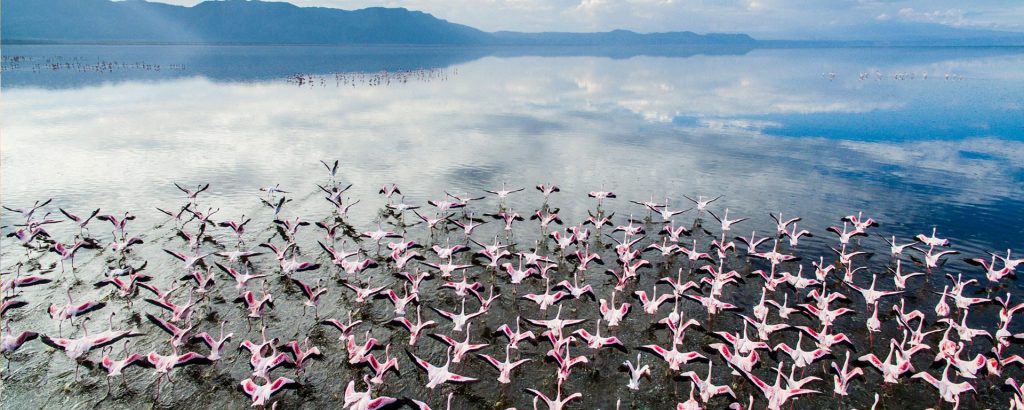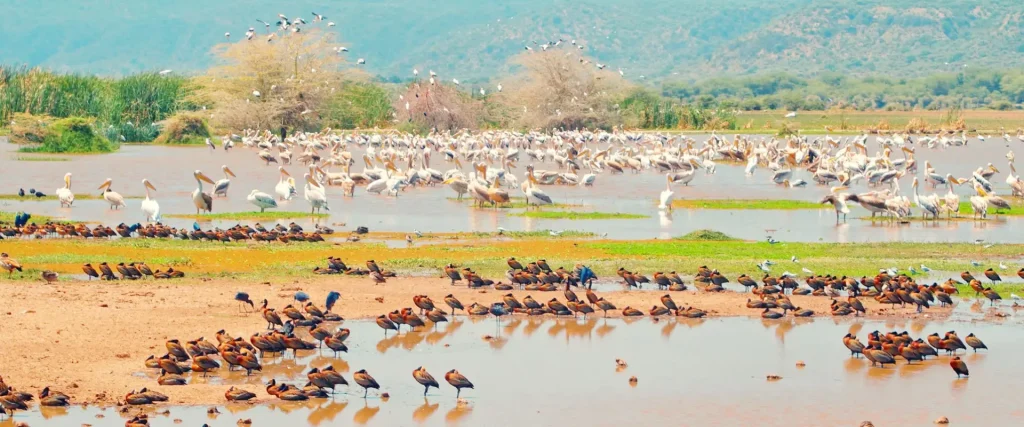Lake Manyara National Park
What Makes The Lake Manyara So Special
Lake Manyara National Park, nestled at the base of the Great Rift Valley escarpment in northern Tanzania, is a small but ecologically rich park known for its stunning landscapes and abundant wildlife. The centerpiece of the park is the alkaline Lake Manyara, which covers a significant portion of its area and attracts large flocks of flamingos and other waterbirds, making it a paradise for birdwatchers. The park’s diverse habitats include lush groundwater forests, open savannahs, and acacia woodlands, creating an environment that supports a wide range of wildlife species.
One of the park’s unique features is its tree-climbing lions, a rare behavior observed in only a few places in Africa. Along with lions, visitors can encounter elephants, hippos, giraffes, and large troops of baboons, which are among the largest concentrations of baboons in the world. The park’s proximity to major safari circuits makes it an excellent day-trip destination or an addition to a longer safari itinerary. Game drives offer thrilling wildlife encounters against the backdrop of the towering escarpment.
Lake Manyara is not just about wildlife; it also offers cultural and adventure experiences. Nearby villages provide opportunities for cultural tours, where visitors can learn about the local communities and their traditions. For adventure enthusiasts, the Treetop Walkway offers a unique perspective of the forest canopy, making it a memorable experience. With its blend of scenic beauty, abundant wildlife, and unique activities, Lake Manyara National Park is a hidden gem among Tanzania’s safari destinations.
Top Lake Manyara Safari Activities



Game Drives
Explore the park’s diverse habitats on morning or afternoon game drives, offering opportunities to spot wildlife such as elephants, giraffes, hippos, zebras, and the park’s famous tree-climbing lions.
Birdwatching
Lake Manyara is a paradise for bird enthusiasts, with over 400 species of birds recorded, including large flocks of flamingos, pelicans, herons, and storks. The lake and surrounding wetlands provide excellent opportunities for spotting migratory and resident birds.
Canoeing (Seasonal)
During high water levels, visitors can enjoy a peaceful canoeing experience on Lake Manyara, providing a close-up view of aquatic life, including hippos and waterbirds, while surrounded by breathtaking scenery.
Cultural Tours
Visit nearby villages, such as Mto wa Mbu, to engage with local communities, learn about their traditions, and experience activities like banana farming and local food tasting.
Walking Safaris
Guided walking safaris in the park allow visitors to explore areas inaccessible by vehicle, providing a more intimate connection with nature and the opportunity to spot smaller wildlife and plants up close.
The best time to visit the Lake Manyara depends on what you want to experience, as each season offers unique highlights
June to October (Dry Season): Best for wildlife viewing and game drives.
November to May (Wet Season): Ideal for birdwatching, lush scenery, and calving season (January-March).
If you want the best of both worlds, visiting during the shoulder months (June or November) offers a mix of good wildlife viewing and fewer crowds.

